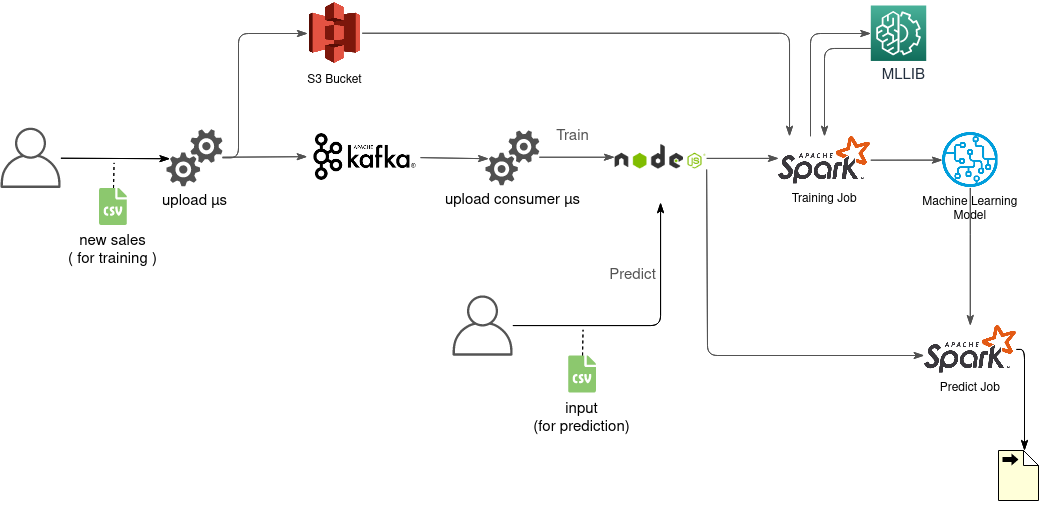This is our project for the Big Data workshop. A pipeline that trains a model on a list of Sales and then predicts the quantity of sales for a certain day. Uses spark and mllib, kafka for streaming, Express as an Http Server, Amazon S3 for Storage in addition to spring boot.
We start by training our model on new sales. Sales have the following structure initially
product_id product_name product_price store_id store_name quantity date
Since we don't have initial data we had to create a dataset ourselves. For that we loaded some data available in a mongo database ( products and stores ). We then generated a number of sales following a certain number of rules. The process is described in details in cvs_generator.py
We start by uploading the sales to the upload microservice ( written in spring boot). This microservice starts by sending the file to an S3 bucket and then produces a message through kafka containing the file url in the S3 bucket
the upload consumer microservice ( written in spring boot) consumes that message and sends the url to an http server( written in express and saved in the same server as spark). This http server then starts the spark training job (asynchronously) and returns a response that the job has started.
- We added the
upload consumerto decouple the http server and the upload microservice. The point is to ensure that the initial upload happens without issues, so any issues with the spark server would be treated lndividually later on. This also helps to verify the integrity of the data in the consumer before sending the command to the http server and starting the job.- Since our
csvfiles are quite large. We opted to sending only the file url through our pipeline. This ensures that :
- The File is well persisted before any operation. We won't have data loss in case of failures.
- We will minimize the size of our messages sent through kafka and therefore eliminate unnecessary overhead.
The spark training job ( called spark import in the project ) launches while taking the url as its only argument. It starts by Loading the data from the s3 bucket. then it cleans the data and creates the model.
Note that instead of using the RDD api, we're using dataframes in order to simplify the operations on the
csvfile and the training later on.
In the cleaning process, we remove the extra fields ( store names , product names, ...) , we then divide our date field into year and month. We then reduce our data by merging sales belong to the same store, on the same product, in the same year & month ( we sum their quantity of sales ).
For the training part we created a simple training pipeline containing 4 stages :
- Store Categorizing : we index the stores
- product categorizing : we index the products
- assembling : we assemble the month, year, store, product into a column
features. This will be used as ourfeatures columnfor the regressor - regression fitting : We set our
features columnand ourlabel column(quantity)
We train and the save the model to be used for predictions later.
The User can call the http-server while providing a csv file. The http-server will call the spark predict job and output the predictions using the saved model.

